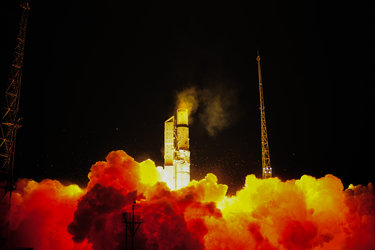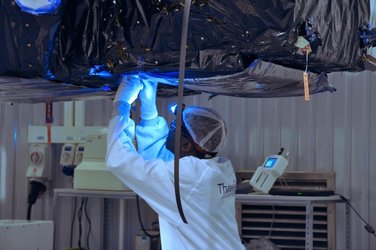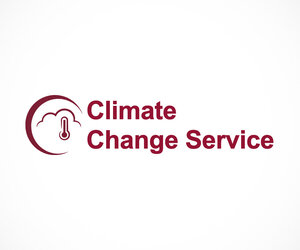Jean-Noël Thépaut: Head of Copernicus Climate Change Service
As Head of the Copernicus Climate Change Service, Jean-Noël Thépaut is responsible for implementing this newly created Service at ECMWF, and ensures that the climate information and products provided within this Service fully respond to the needs of a wide variety of stakeholders, from institutional policy makers and public authorities, to practitioners and sectoral users.

Jean-Noël Thépaut, a native of France, has worked as a scientist at Météo-France and ECMWF. He received his PhD from Paris VI University in 1992, in the field of of atmospheric data assimilation. He was involved in the early development of the variational assimilation systems at ECMWF and Météo-France, and devoted part of his career to the exploitation of a wide variety of satellite data in Numerical Weather Prediction (NWP). He has been the Head of the Data Division, and Deputy Director of the Research Department at ECMWF for many years, where his group was in charge of the development of world-class data assimilation algorithms for NWP, the exploitation of satellite observations from operational and research EO platforms, and the development and production of state-of-the-art climate reanalyses. He has served on a number of international committees, including Eumetsat Expert Teams, the NASA Global Modeling and assimilation Office Advisory Board, the ESA Scientific Advisory Committee and the WCRP Data Advisory Council.
ESA: What is the Copernicus Climate Change Service?
Jean-Noël Thépaut
The Copernicus Climate Change Service – or C3S – will bring a consistent standard to how we measure, monitor and predict climate change. The Service will maximise the potential of past, current and future Earth observations. This ambitious goal will be achieved by combining ground, ocean, airborne and satellite data with modelling information.
With the wealth of free and open data that C3S provides, it will help users to assess the impact of their business decisions and make informed choices, delivering a more energy efficient and climate aware economy. These sound investment decisions will not only stimulate growth in the short term, but reduce the impact of climate change on the economy and society in the future.
ESA: What role will Sentinel-3 play in this Service?
Jean-Noël Thépaut
Policy makers as well as sectoral users require long term and accurate climate information to develop environmental adaptation and mitigation policies, and adapt their businesses to a changing climate. The provision of tailored climate indicators relies crucially on the availability of reliable and quality-assured estimates of a number of essential climate variables, and this is where Sentinel-3 comes into play. The Copernicus Climate Change Service has the ambition to provide, on an operational basis, time series of climate data records for variables such as sea level, sea and land surface temperature, sea ice, ice sheets and ocean colour, to name a few. Sentinel-3, designed to ensure the continuity of the ERS, Envisat, and also CryoSat satellites, provides the prospect of delivering high quality estimates of these key variables for the next two decades, which is of huge interest for climate monitoring purposes.
ESA: When analysing climate change, a long-term approach to data is necessary. What challenges do you face in the harmonisation of data from Sentinel-3 with data from previous satellite missions?
Jean-Noël Thépaut
Measuring long-term climate change trends from a series of different satellite instruments is indeed a challenging task, and requires specific efforts in terms of reprocessing calibration and bias correction, as the accuracy and stability of time series is paramount to extract small climate signals over extended periods of time. However, teams in Europe are already addressing these issues in the context of the ESA Climate Change Initiative or the Eumetsat SAFs, and reanalyses (atmospheric, oceanic or land) are another efficient approach to multi-instrument estimates of climate variables. Optimising Sentinel-3 so that it continues previous ESA missions, by providing similar observables but with a very much enhanced capability, will facilitate addressing this issue.
ESA: What are you most looking forward to from the Sentinel-3 mission?
Jean-Noël Thépaut
As mentioned above, several key essential climate variables to be delivered by the Copernicus Climate Change Service will be measured by Sentinel-3 instruments. The SRAL products are of particular importance as they will not only serve the Copernicus Climate Change Service but also the Copernicus Marine Environment Monitoring Service, with which we share common interests. Last but not least, and being an ECMWF employee, I would like to stress the importance of Sentinel-3 for the core Numerical Weather Prediction mission of ECMWF. My colleagues from the Research Department are gearing up to exploit immediately wave and atmospheric products from this mission. As an example, one can estimate that assimilating significant wave height in the wave model reduces errors by up to 9%. This can translate into atmospheric forecast scores improving by a few per cent, especially during the winter seasons.
The initialisation of the ECMWF ocean models using altimeter sea surface height data has also a clear positive impact on the seasonal forecast skill. In summary, expectations are high from this new Sentinel, both for our core missions and for our Copernicus Services.
Editor's note:
This is one in a series of interviews with a few of the key people that are involved in the Sentinel-3 mission. Please check back as further interviews will be added to over the coming weeks.








